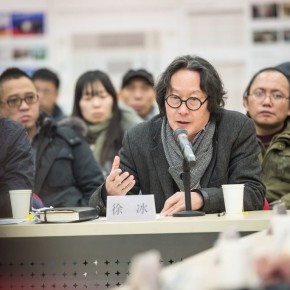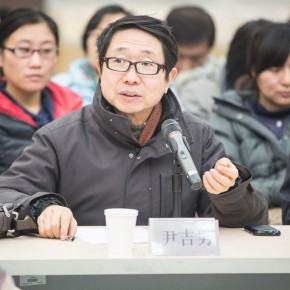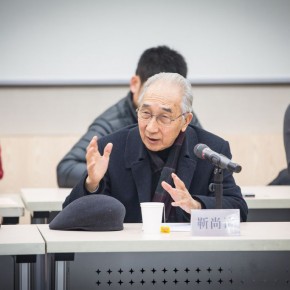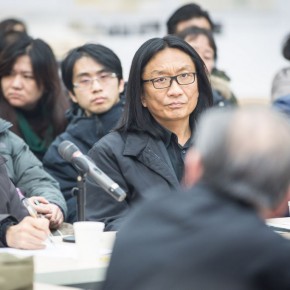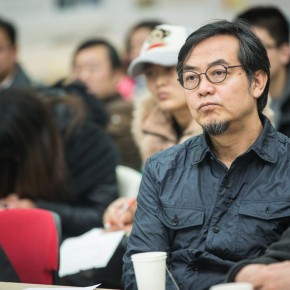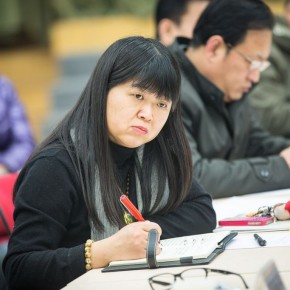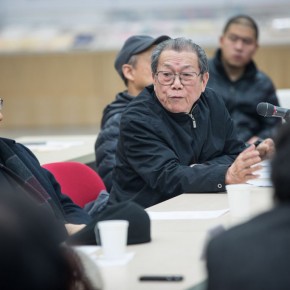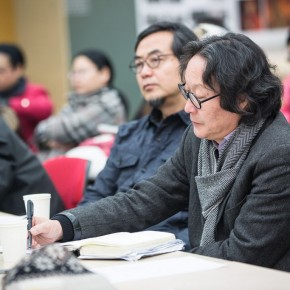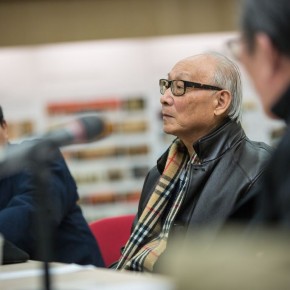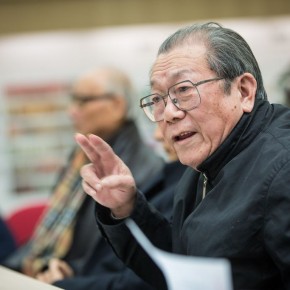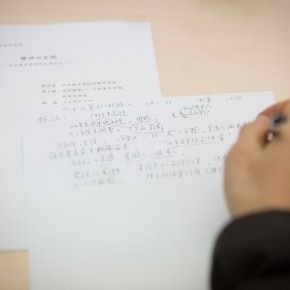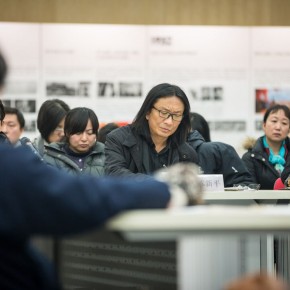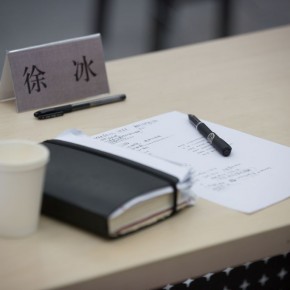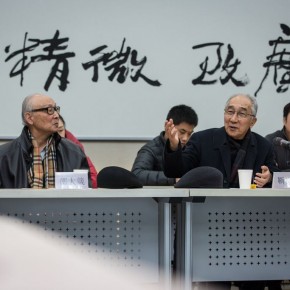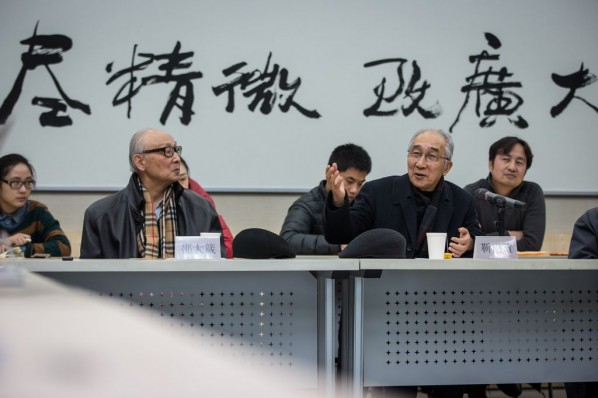
At 13:30 on December 24, 2013, the first seminar of CAFA’s history entitled “Spirit and Practice” was held in the school history exhibition hall. Yin Ji’nan served as the academic director of the seminar, Professors including Xu Bing, Jin Shangyi, Shao Dazhen, Zhong Han, Sun Jingbo, Su Xinping, Sui Jianguo, Zhang Baowei, Yin Shuangxi, etc., as well as faculty teachers and students and alumni attended the seminar. Jin Shangyi, Zhong Han, Shao Dazhen, Sun Jingbo, Zhang Baowei, Yin Shuangxi, Sui Jianguo each gave a keynote speech, from their own perspective, respectively showcasing the multifaceted history of CAFA.
Vice President Xu Bing gave a brief speech on behalf of CAFA, and he said that the series of activities to celebrate the 95th anniversary of CAFA implemented by the government advocated a civilized and simple fresh air, with a series of academic activities, such as the “International Comparison and Study” (“Research and Comparison of International Art College Educational Quality” program), “Teachers’ Work of CAFA” etc. The seminar on school history announced the end of the series of activities, he pointed out that the purpose of the event was intended to “comb through the tradition of CAFA, and refine the spirit of CAFA”, in order to prepare the “Centurial Splendid Project” of CAFA. Subsequently Yin Jinan opened the discussion with “Culture is living in the strong memory”.
Jin Shangyi initially introduced the teaching tradition of CAFA. Jin believed that the teaching development of CAFA, status and achievements were inseparable from the contributions made ??by the early teachers, such as Xu Beihong, Hou Yimin and so on. As one of the first batch of students that had studied in France, Xu Beihong introduced the most basic realistic system of Western painting into China, following that the next generation of painters studied in the Soviet Union then introduced a Western impressionism and realism creation to China. In the learning process early teachers did not only absorb the core of Western painting, but also focused on a combination of Chinese and Western methods. They made a large contribution to CAFA and Chinese art education.
Zhong Han recalled the history of CAFA, from 1949 through to 1966. When New China was founded in 1949, the National Beiping Art School and the Department of Fine Arts of the Third Ministry (College of Literature and Art) of the North China University were unified into CAFA, and brought together creative and progressive art talents. Faculties were established in CAFA in 1953, with the establishment of a studio institute, opening the tradition of sketching in the countryside.
Shao Dazhen talked about the academic tradition of CAFA “pursuit of artistic skill and concept”. Shao said that Western painting was objective and concrete while Chinese painting focused on romantic charm, they were different in expressive ways, but the principles were actually the same. CAFA focused on the training of skills, techniques and shaping the capability of the students, because skill was the basis of “Tao (artistic concept)”, it was impossible to talk about a concept being separated from skill.
Prof. Sun Jingbo gave a keynote speech from the perspective of the “Heritage of innovation, promotion of teaching and learning”. “In China, any person that wants to be a great artist will yearn for CAFA.” Sun talked about the lofty status of CAFA for art students, during the period of study with the old teachers in the High School Affiliated with CAFA, they are heavily infected by their dedicated and sincere artistic attitude.
Prof. Zhang Baowei talked about the history of two decades of teaching in CAFA. He returned to China and established the Department of Design in 1993. For the current development, Prof. Zhang pointed out that it should formulate a new syllabus, focusing on basic artistic teaching, the practical training of students, as well as communication between various disciplines.
Yin Shuangxi illustrated the situation of teaching and creation of Luxun College of Literature and Art in Yan’an, which was one of the predecessors of CAFA, in the period from 1938 to 1945. He talked about not only the origin and purpose of the establishment of the school, the systems and structures, education policies, subsistence allowances and books, disciplinary arrangements, teachers, but also a variety of exhibitions held in Yan’an, such as the Exhibition for Luxun College of Literature and Art in Yan’an, Battlefield Students’ Painting Exhibition, as well as various events in the history of the school.
Prof. Sui Jianguo gave a keynote speech entitled “Sculpture is going toward openness (1952 - 2013)”, making a detailed introduction to the development process of the Department of Sculpture, starting from the establishment of the department to the present day. Department of Sculpture includes six studios, mainly launched from three directions: the realism, modern concept and materials, public art. Wherein the first, second, and sixth studios are respectively biased towards Chinese realistic system; European and Soviet Union’ realistic system; and the tradition of folk figurine. The third and fourth studios respectively emphasise the contemporary, concept and materials; focusing on material language, oriented towards modern ideas. The Fifth studio stresses the combination of sculpture, architecture, garden and so on. Sui said, the size, hardware, software of the Department of Sculpture was a champion in Asia, faculty members are the strongest in the nation and even Asia, in addition to keeping up with the international sculptural teaching.
The seminar lasted for over four hours.
Journalist: Ye Yuanfeng, Photo: Hu Zhiheng/CAFA ART INFO
Translated by Chen Peihua and edited by Sue/CAFA ART INFO



